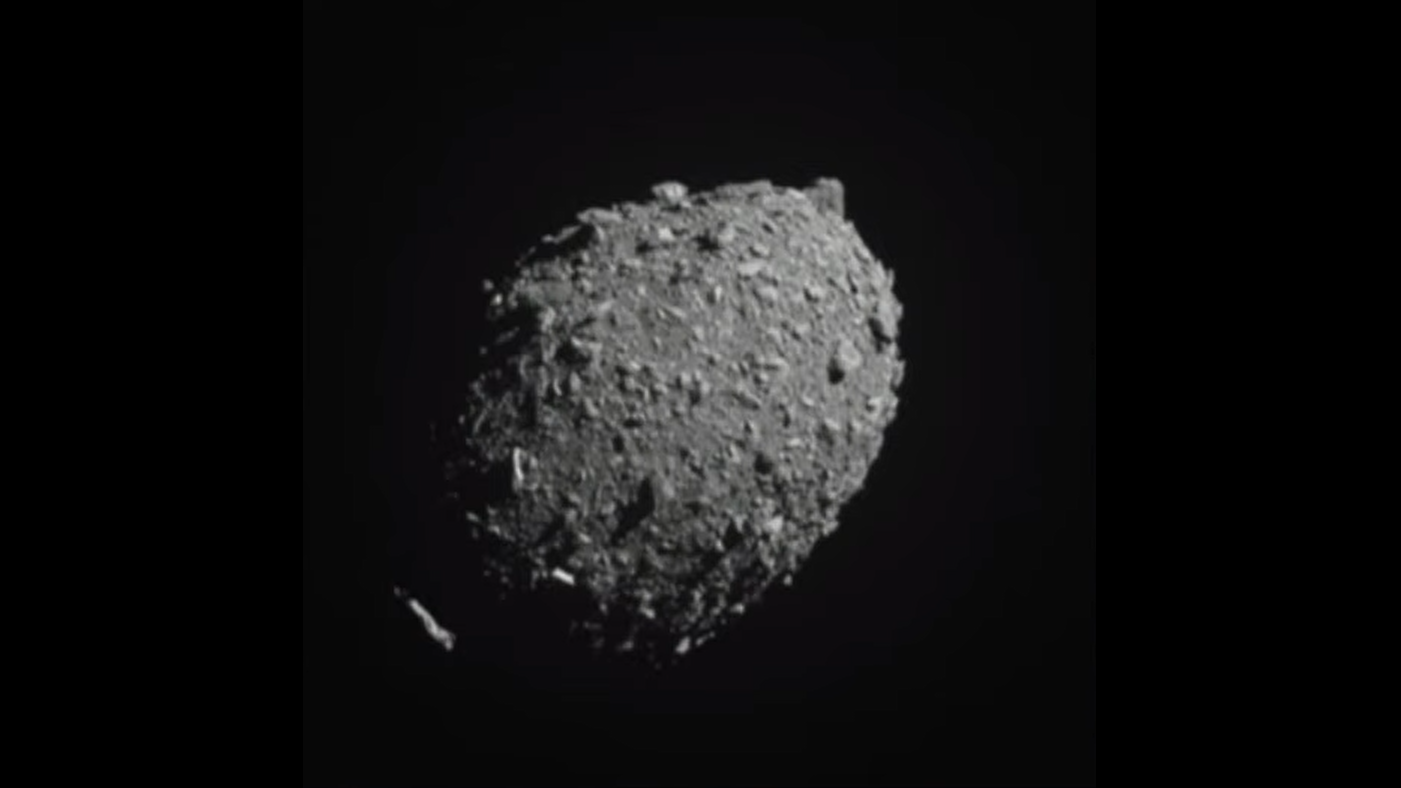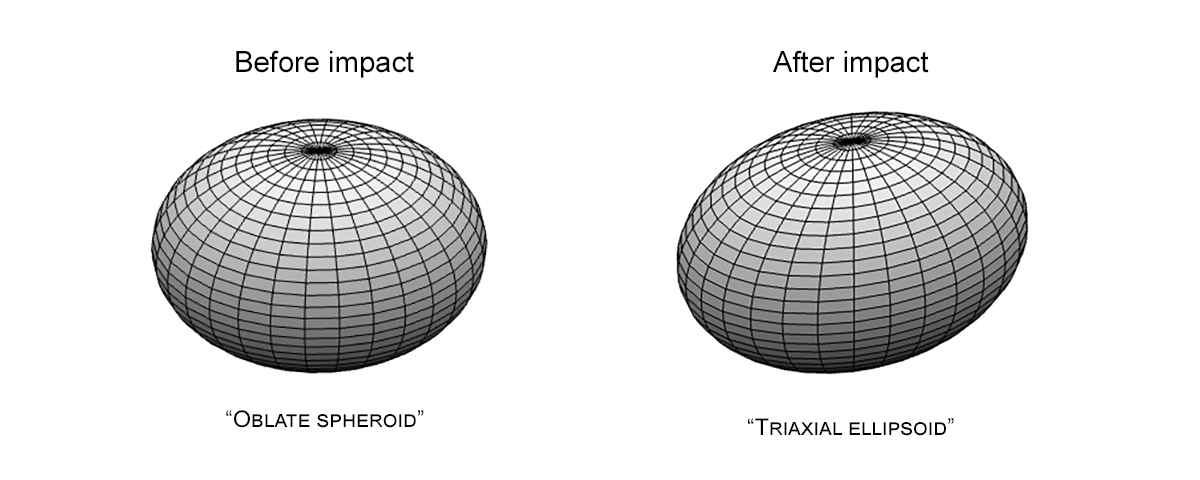
The shape of the asteroid Dimorphos was changed when NASA's DART spacecraft deliberately crashed into it in 2022 as part of a test of humanity's planetary defense capabilities.
DART, the Double Asteroid Redirection Test, was designed to show whether we could divert a potentially hazardous asteroid away from Earth. It was sent to a binary asteroid, in which the 170-meter-wide (560-foot-wide) Dimorphos orbits a larger 760-meter (2,493-foot-wide) space rock called Didymos. When DART impacted Dimorphos on 26 September 2022, astronomers were able to measure how much the impact had nudged the asteroid by measuring how the space rock's orbit around Didymos changed.
Now, however, scientists have shown that it seems DART didn't just give Dimorphos a push; it also hit Dimorphos with enough kinetic energy to reshape it.
Related: NASA's asteroid-impacting DART mission completely changed the shape of its target
"The entire shape of the asteroid has changed, from a relatively symmetrical object to a 'triaxial ellipsoid' — something more like an oblong watermelon," said Shantanu Naidu of NASA's Jet Propulsion Laboratory (JPL) in a statement.
Originally, Dimorphos would have been an oblate spheroid, which is kind of like a squashed ball. The impact of DART at 5 kilometers per second (3 miles per second) sent shockwaves through the asteroid, resulting in it becoming more elongated and shifting its axis of rotation off-center. The new shape is inferred by astronomers from the light curve of the Didymos–Dimorphos system, which is aligned in such a way that we can see them transiting and eclipsing one another.
This conclusion from Naidu's team is also shared in work published in February by a group spearheaded by Sabina Raducan of the University of Bern in Switzerland. Raducan's team concluded that the impact had resulted in up to 1% of Dimorphos' mass being ejected into space, and another 8% being redistributed across the surface as the asteroid absorbed the impact energy and reshaped itself. The conclusion was that, to allow itself to morph in such a way, Dimorphos must be a loose rubble pile — an agglomeration of dirt and rocks held together by weak gravity and which can easily be reshaped, as opposed to a rigid structure that would not give as easily.
"The results of [Naidu et al's] study agree with others that are being published," said Tom Statler, who is the lead scientist for Solar System small bodies at NASA HQ in Washington, DC. "Seeing separate groups analyze the data and independently come to the same conclusions is a hallmark of a solid scientific result."
The new study also confirms how much Dimorphos' orbit around Didymos was altered by DART's impact. Prior to the impact, Dimorphos revolved around Didymos once every 11 hours and 55 minutes with an orbital radius of 1.189 kilometers (3,900 feet).

Studies of the light curve, coupled with radar observations from the Deep Space Network's Goldstone Solar System Radar in California, show that Dimorphos' orbital period has reduced to 11 hours, 22 minutes and 3 seconds, within an error margin of 1.5 seconds. Its orbital radius has also reduced to 1.152 kilometers (3,780 feet). Given that Dimorphos' axis of rotation is now offset from its geographical center, Dimorphos now rocks backwards and forwards as it orbits Didymos, a swaying motion detectable through the shape of the light curve.
"Before impact the times of the [transit] events occurred regularly, showing a circular orbit," said JPL's Steve Chesley. "After impact, there were very slight timing differences, showing something was askew. We never expected to get this kind of accuracy."
DART was designed to test whether it'd be possible to alter the trajectory of a small, but dangerous, asteroid if it were on a collision course with Earth. The experiment exceeded scientists' expectations in terms of how much DART nudged Dimorphos, and what the impact is teaching us about how asteroids behave when faced with such kinetic violence.
"DART is not only showing us the pathway to an asteroid-deflection technology, it's revealing a new fundamental understanding of what asteroids are and how they behave," said Statler.
The study of Didymos and Dimorphos is not over yet. In October of 2024, the European Space Agency will launch the Hera spacecraft, which is a mission to encounter the two asteroids and inspect how much damage DART did to Dimorphos, in addition to studying the nature of the asteroids more closely.
The new results were published on March 19 in The Planetary Science Journal.







